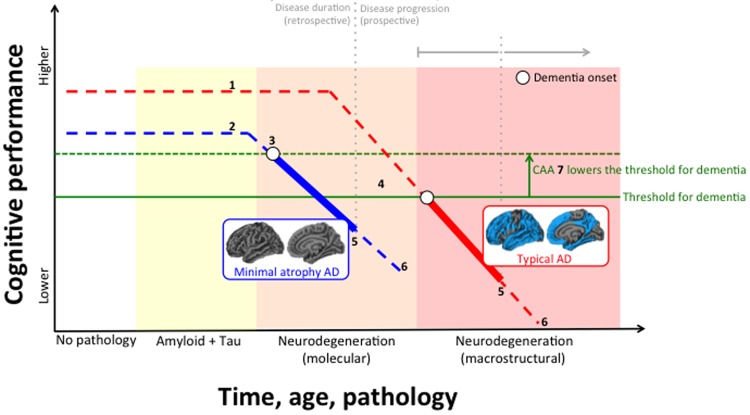Figure 1.
Hypothetical interrelation between subtypes of Alzheimer’s disease (AD), neurodegeneration, cerebral amyloid angiopathy (CAA), and cognitive reserve. (1) Higher cognitive reserve; (2) Lower cognitive reserve; (3) Earlier disease onset in minimal atrophy AD (disease onset in the figure refers to first symptoms of dementia, not to first evidence for biomarker abnormality); (4) Later disease onset in typical AD; (5) Similar disease duration at baseline (retrospective) between typical and minimal atrophy AD, and similar cognitive performance at baseline, with typical AD usually showing slightly more impairment; (6) Faster disease progression (prospective) with typical AD reaching severe dementia in shorter time; (7) CAA is more frequent in minimal atrophy AD and may lower the threshold for the amount of AD pathology needed to produce dementia.

